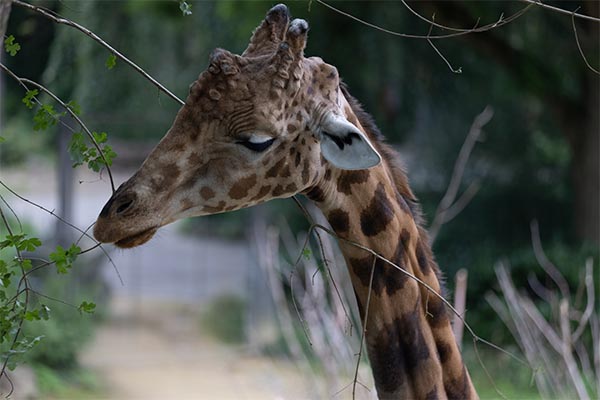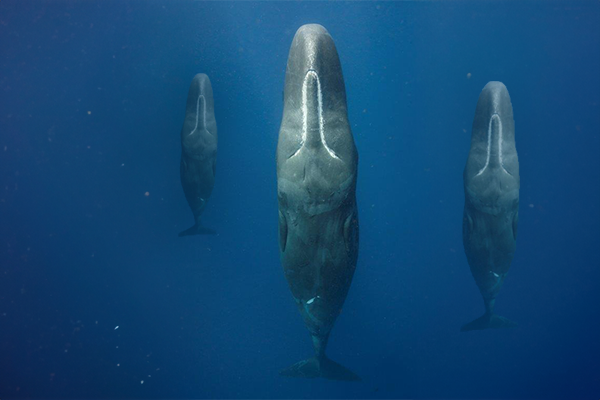
12 Sleep Habits in the Animal World
Sleep is universal. From humans to the smallest critter, there is a period of rest we each take that is essential for restoration and repair.
Each night as humans, we crawl into our beds hoping for a peaceful 7-9 hours slumber. But for the rest of the animal kingdom, their sleep is quite a different experience. From sleeping 20 hours each day to only switching off half of their brain at a time, here are the unique ways some animals sleep.
1. Elephants
Studies have found that elephants in the wild sleep for only two hours each day. Those two hours aren’t consecutive, with predators to worry about, their sleep occurs in spurts over several hours while mostly standing. These wild majestic creatures continue as usual without being impacted by their lack of sleep. Talk about a power nap! Survival seems to be the key reason for this unusual sleeping behaviour and it’s not necessarily in their nature. When compared to their protected counterparts, captive elephants typically sleep up to 7 hours.
2. Giraffes
The shortest sleepers in the mammal kingdom are actually the tallest! Adult giraffes can go weeks without sleeping and when they do sleep, it’s only a little catnap of around 30 minutes a day in short 5 minute bursts at a time. Being such large and slow creatures they are constantly on guard against predators so they often avoid laying down and sleep standing up. The irony is their main predator, lions, are notorious for sleeping all day!
3. Sperm Whales
Through studying sperm whale calls and behaviours, researchers discovered that these whales are able to fall into a deep sleep for around 10 to 15 minutes at a time where they aren’t easily disturbed. Researchers noticed they weren’t even aroused by the sounds of a nearby boat! This was surprising as whales are unihemispheric sleepers, meaning they switch on and off one half of their brain at a time. The most unusual sleeping trait these water giants have is how they sleep, they sleep vertically!
4. Ducks
Sleep researchers in Indiana State University have found interesting sleeping behaviours in mallard ducks. Ever vigilant, these ducks slept in groups with a lookout sleeping with one eye open! The lookout ducks used unihemispheric sleeping while the ducks in the middle slept with both eyes closed.
5. Dolphins
Unlike our predator concerned unihemispheric sleepers mentioned previously, Dolphins use this way of sleeping as they need to be half awake to keep breathing! So as to not suffocate in their sleep, they need to rise to the surface regularly to take in enough air. However, if they’re wanting to dream a little longer, they will float near the surface and keep their blowholes above the water – this is called logging.
6. Walruses
An equal-opportunity sleeper is the walrus. It can sleep anytime, anyplace, anywhere! Researchers have even noticed walruses resting in water while hanging off of ice floes using their tucks. When sleeping in the sea, they need air, so naturally only sleep there for short periods. But when on land, these dreamers can settle in for a deep sleep that can last up to 19 hours. However, walruses don’t always sleep the day away, they can stay awake for extended stints when swimming, staying up for up to 84 straight hours!
7. Bats
The smallest animal on this list sleeps hanging upside-down. They are one of the sleepiest mammals in the world, with the little brown bat sleeping an average 19 hours every day! These little vampires sleep during most of the day to take advantage of when the delectable creepy crawlies come out at night.
8. Zebras
Another African native, the Zebra, sleeps standing up to stay alert for predators. Their ability to sleep upright is called “stay apparatus” which allows their bodies to lock up their joints and knees in order to drift off without falling over. Occasionally they do sleep lying down when wanting to achieve a deep REM sleep.
9. Sea Otters
Adorably, sea otters sleep in small groups or pairs holding hands. When sleeping they float on their backs and hold hands so as to not drift away from each other. To make things even cuter, a baby sea otter sleeps on its mum’s belly as it can’t sleep floating just yet. Another little quirk, these furry floaters do, is use seaweed as an anchor by wrapping it around themselves to keep their little groups in place.
10. Migratory Birds
Flying high in the sky, these birds sleep but don’t have to land! They spend most of their lives travelling and some of these birds like the alpine swift can stay in the air for 200+ straight days! How do they sleep though? They’re able to multitask and sleep whenever they’re not flapping their wings – like when they’re soaring or gliding in the air. Some scientists believe these migratory birds are unihemispheric sleepers which helps them to multitask.
11. Meerkats
Meerkats live in groups called mobs or gangs. The furry ruffians sleep in underground burrows with numerous sleeping chambers. They sleep in piles, laying on one another to maintain warmth. The matriarch sleeps in the depths of the pile to get the best sleep possible. As the seasons change, meerkats tend to spread out more over summer and some even sleep above ground.
12. Chimpanzees
Our cousins sleep similarly to us humans. They use twigs and leaves for comfy nests constructed high in the tree like a bed! When choosing their sleeping location, they’re particular about the stiffness of the branches and the distance between leaves. Much like we’re particular about the firmness of our mattresses and the softness of our pillows. Interestingly, however, each night is a different bed as they will only use their nest once.









